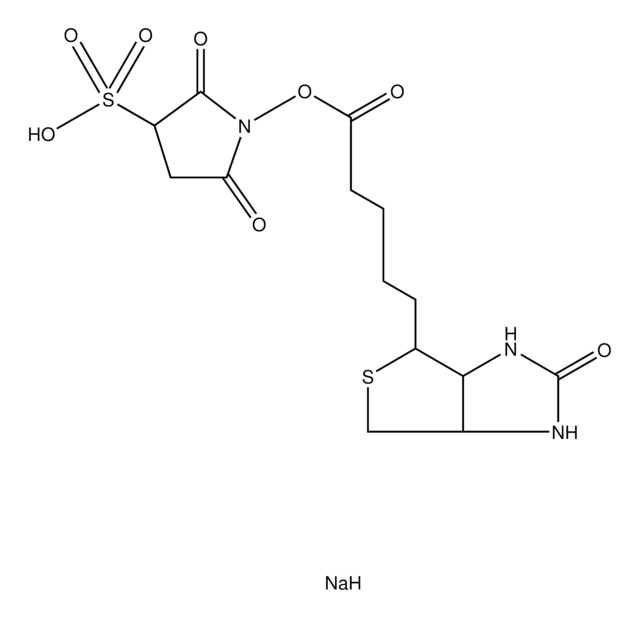O0391
Olopatadine hydrochloride
≥98% (HPLC)
Synonyme(s) :
(11Z)-11-[3-(Dimethylamino)propylidene]-6,11-dihydrodibenz[b,e]oxepin-2-acetic acid hydrochloride, AL-4943A, KW-4679, Opatanol, Patanol
Sélectionner une taille de conditionnement
113,00 $
Sélectionner une taille de conditionnement
About This Item
113,00 $
Produits recommandés
Essai
≥98% (HPLC)
Forme
solid
Solubilité
H2O: ≥20 mg/mL
Température de stockage
room temp
Chaîne SMILES
Cl.CN(C)CC\C=C1\c2ccccc2COc3ccc(CC(O)=O)cc13
InChI
1S/C21H23NO3.ClH/c1-22(2)11-5-8-18-17-7-4-3-6-16(17)14-25-20-10-9-15(12-19(18)20)13-21(23)24;/h3-4,6-10,12H,5,11,13-14H2,1-2H3,(H,23,24);1H/b18-8-;
Clé InChI
HVRLZEKDTUEKQH-NOILCQHBSA-N
Informations sur le gène
human ... HRH1(3269)
Vous recherchez des produits similaires ? Visite Guide de comparaison des produits
Actions biochimiques/physiologiques
Mention d'avertissement
Danger
Mentions de danger
Conseils de prudence
Classification des risques
Acute Tox. 3 Oral - Aquatic Acute 1
Code de la classe de stockage
6.1C - Combustible acute toxic Cat.3 / toxic compounds or compounds which causing chronic effects
Classe de danger pour l'eau (WGK)
WGK 3
Point d'éclair (°F)
Not applicable
Point d'éclair (°C)
Not applicable
Faites votre choix parmi les versions les plus récentes :
Certificats d'analyse (COA)
Vous ne trouvez pas la bonne version ?
Si vous avez besoin d'une version particulière, vous pouvez rechercher un certificat spécifique par le numéro de lot.
Déjà en possession de ce produit ?
Retrouvez la documentation relative aux produits que vous avez récemment achetés dans la Bibliothèque de documents.
Active Filters
Notre équipe de scientifiques dispose d'une expérience dans tous les secteurs de la recherche, notamment en sciences de la vie, science des matériaux, synthèse chimique, chromatographie, analyse et dans de nombreux autres domaines..
Contacter notre Service technique








